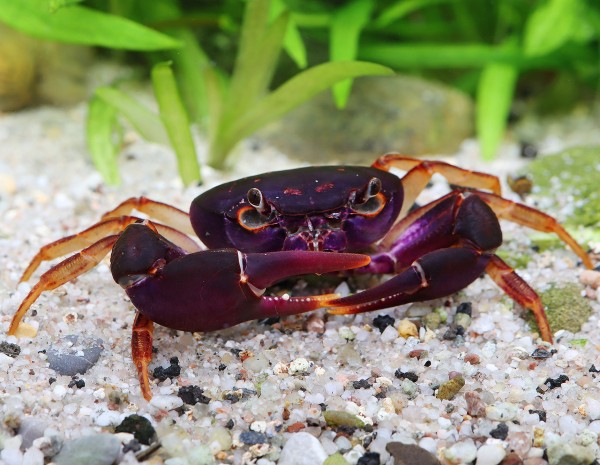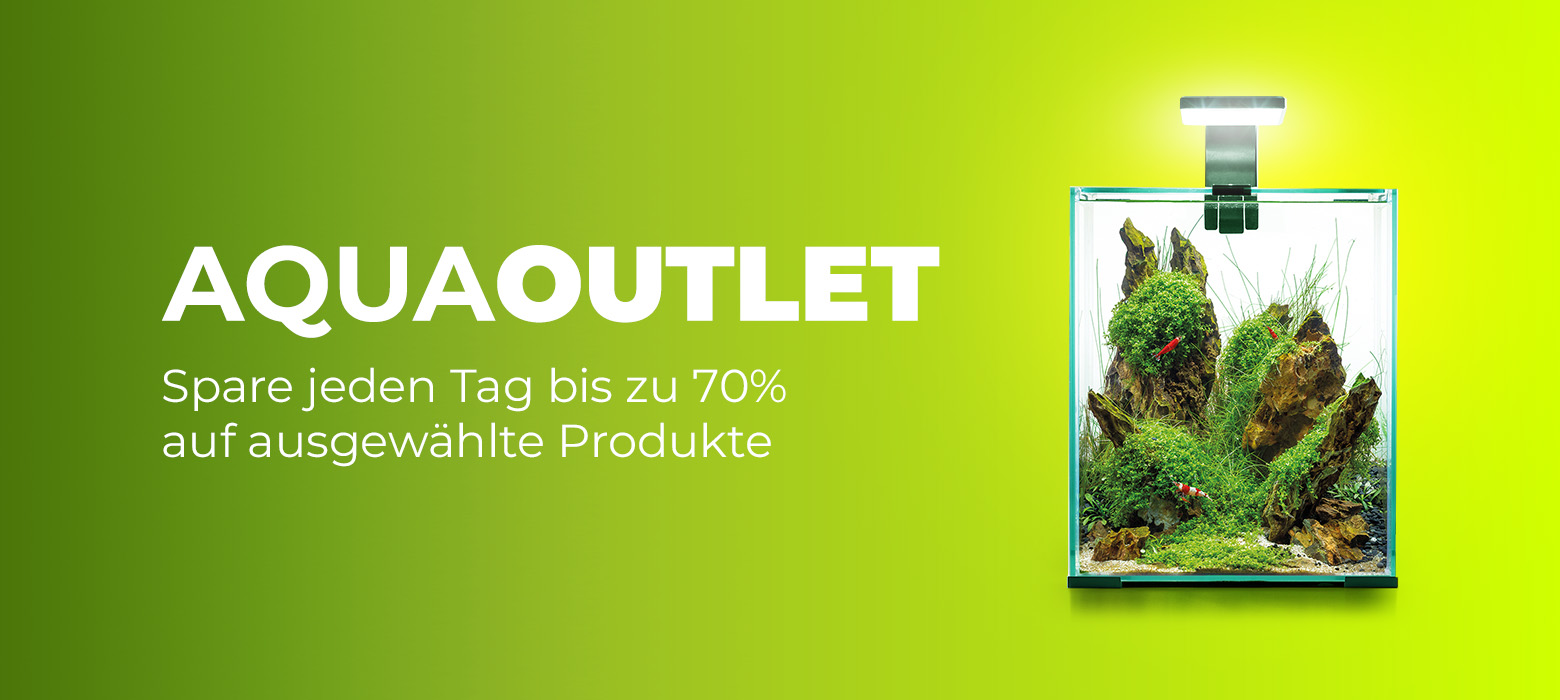- Item no: 16593
Fast delivery times
All products are in stock with us!14 years of breeding experience
Let our team of experts advise you!High customer satisfaction
from over 3,000 reviews "The Purple Freshwater Crab is an as yet undetermined Globithelphusa species and is native to India. In its native West India it is found in waters near the Himalayan Mountains, but not yet in the mountainous area. More precisely, this crab comes from the area around Koch Bihar in West Bengal. It is also called"Indian Lilac Crab". The purple freshwater crab Globithelphusa sp. belongs to the true freshwater crabs. According to its species it lives mainly in the water, but it always needs a possibility to leave the water.
The very interestingly colored and partly quite variable Indian Swimming Crab Globithelphusa sp. "Purple" shines in reddish to dark purple tones and violet shades. Their claw tips are bright orange, and the legs are also orange to reddish in color. The crabs reach a carapace size of 4-6 cm and a leg span of 10-12 cm. The females and males can be distinguished with absolute certainty by the shape of the abdominal flap - the abdominal pockets of the male Globithelphusa "Indian Lilac" are V-shaped, while that of the female Purple Freshwater Crab is U-shaped.
The Indian Water Crab can be kept alone, as a pair, or in a group of 3-4 conspecifics if the aquaterrarium is set up appropriately. Because this Globithelphusa sp. "Indian Lilac" can be quite aggressive against conspecifics, the crabs should be kept in an aquarium from 80 or 100x40x40 cm edge length, despite their relatively small size.
The aquaterrarium for the Indian freshwater crab should have a very large water part, and the crabs need there very many hiding places and a good structuring by wood or stones, caves and other aquarium decoration. This way the crabs can avoid their rather territorial conspecifics. Aquarium plants with rather soft foliage tend to be nibbled by the Indian freshwater crab eventually. Even though Globithelphusa sp. "Lila" lives mainly in water and can therefore even be kept in a"normal" aquarium, the animals still need a larger perch above the water level - a large root that protrudes above the water surface, a floating island or, of course, a terrestrial part of about 30% of the total area of the aquaterrarium.
It is possible to keep fish in the large water section, but smaller aquarium fish may be partially chased or at least nipped by the Purple Freshwater Crab. Nimble surface fish, however, are relatively safe from the claws of the Globithelphusa sp. freshwater crab. Dwarf shrimp tend to be left alone and therefore may be able to be socialized with the Globithelphusa sp. "Indian Lilac". However, the Indian freshwater crab is an excellent snail eater.
The females of Globithelphusa sp. "Lilac" carry large and relatively few eggs, from which fully developed mini-crabs hatch after a few weeks, not larvae. Successful offspring in aquaristics have already been reported.
Contents: 1x Purple Freshwater Crab - Globithelphusa sp
Our food recommendation: We recommend crab feed from Natureholic.
Our plant recommendation: Use for planting NatureHolic InVitros. These are free of snails, planarians and other unwanted co-inhabitants. Also free from algae spores, bacteria and fungi.
Expert Tip: We recommend for fish keeping the NatureHolic 3 Phase Liquid. The care set offers the best all-round protection for your animals. It ensures optimal conditions for successful breeding and keeping.
| Scientific name | Globithelphusa sp. "Purple" |
| German Name: | Purple freshwater crab, Indian freshwater crab, Indian Lilac crab |
| Difficulty level: | suitable for beginners |
| Origin/Distribution: | West India, cook Bihar |
| Coloration: | reddish purple to dark purple carapace, claw tips bright orange, legs orange to reddish |
| Age expectancy | several years |
| Water parameters: | GH 6 to 13, KH 3 to 8, pH 6.5 to 8.5, temperature 20 to 28 °C |
| Tank size: | from 80 cm, for a group from 100 cm |
| Food | Snails, frozen food, crab food for carnivorous crabs, protein food, vegetables, fruit, green food such as scalded spinach, peas, etc. |
| Reproduction | after several weeks of gestation, finished juvenile crabs hatch that are viable in freshwater |
| Behavior | relatively peaceful |
| Socialization | with dwarf shrimp and nimble surface fish. Not with crayfish. Snails are eaten |
| Further information | Colorful jewels in the terrarium - land crabs of the genus Geosesarma, micro crabs, Limnopilos nayanetri - The smallest crab in the world!, Keeping mangrove crabs |
- Item no: 16593
Entdecke die Garnelio Welt!
Garnelio gehört zu den größten Onlineshops für wirbellose Aquarientiere weltweit.
Viele Artikel gibt es exklusiv nur bei uns im Shop.







